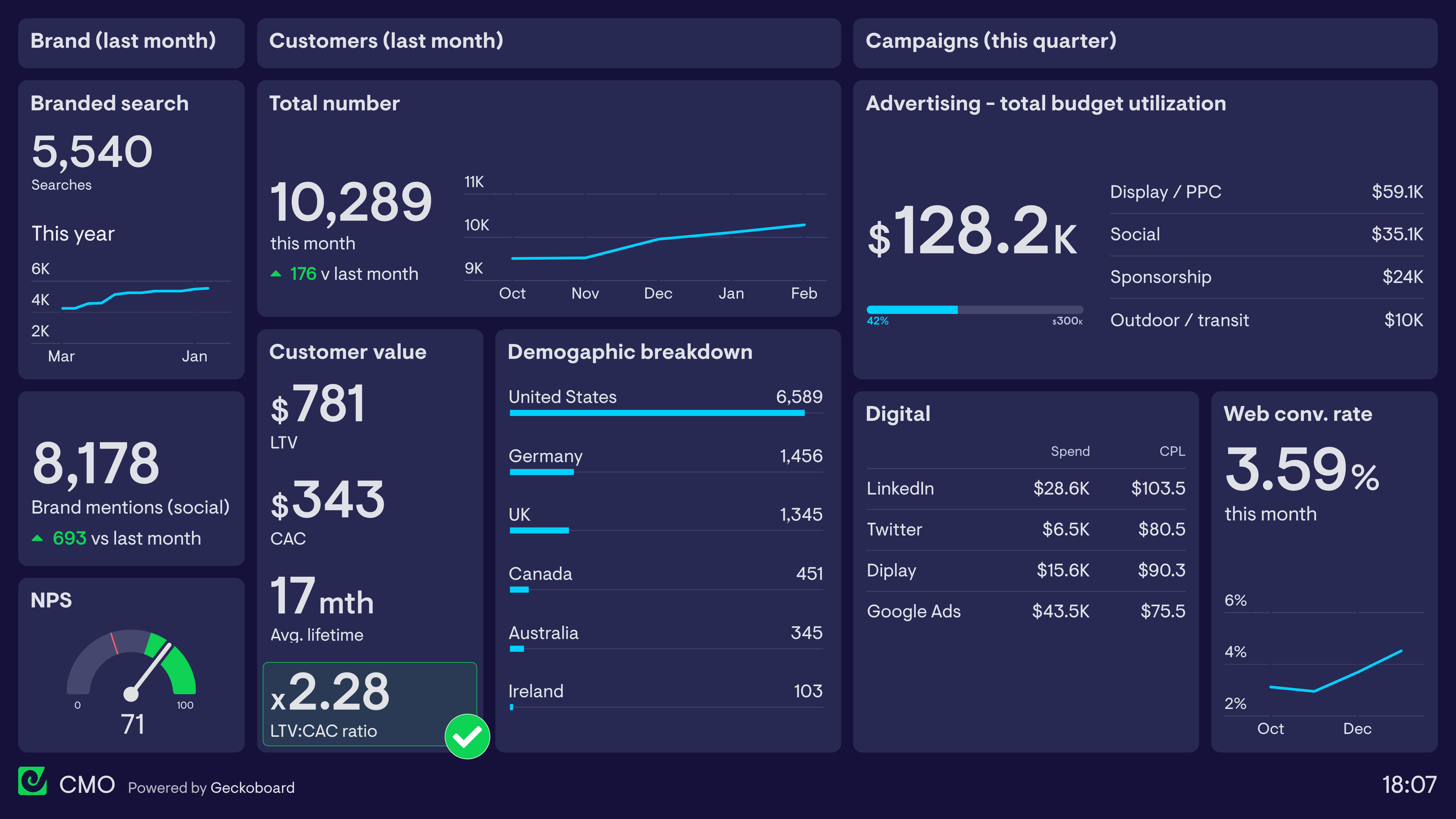
Maximizing your marketing return on investment (ROI) is crucial for the success of any business. With the ever-changing landscape of digital marketing, it can be challenging to keep track of all your efforts and determine what is working and what is not. This is where a marketing dashboard comes into play. By utilizing a dashboard to track your marketing efforts, you can easily monitor key performance indicators (KPIs) and make data-driven decisions to optimize your campaigns for the highest ROI.
A marketing dashboard is a tool that allows you to visualize and track the performance of your marketing activities in one centralized location. It provides a snapshot of key metrics such as website traffic, conversion rates, social media engagement, email open rates, and more. By having all this data in one place, you can quickly identify trends and patterns, and make informed decisions on where to allocate your resources for the best results.
When setting up a marketing dashboard, it is important to first define your goals and KPIs. What are you trying to achieve with your marketing efforts? Are you looking to increase brand awareness, generate leads, drive sales, or all of the above? Once you have a clear understanding of your objectives, you can then determine which metrics are most relevant to track. These could include metrics such as website traffic, leads generated, conversion rates, customer acquisition cost, and customer lifetime value.
Once you have identified your key metrics, it's time to start building out your dashboard. There are many tools available that can help you create a customized dashboard that meets your specific needs. Some popular dashboard tools include Google Analytics, HubSpot, and Tableau. These tools allow you to easily import data from various sources, visualize it in different formats such as charts and graphs, and customize the layout to suit your preferences.
When designing your dashboard, it's important to keep it simple and easy to understand. You want to be able to glance at your dashboard and quickly assess how your marketing campaigns are performing. Use clear, concise visualizations that highlight the most important metrics, and avoid cluttering the dashboard with unnecessary information. Remember, the goal is to make data-driven decisions, so focus on the metrics that are most relevant to your goals.
One of the key benefits of using a marketing dashboard is the ability to track ROI in real-time. By monitoring your key metrics on a regular basis, you can quickly identify which campaigns are delivering the highest ROI and which ones may need to be adjusted or paused. This allows you to be more agile in your marketing efforts and allocate resources where they will have the greatest impact.
In addition to tracking ROI, a marketing dashboard can also help you identify areas for improvement. By analyzing your data, you may uncover opportunities to optimize your campaigns, such as tweaking ad copy, adjusting targeting parameters, or testing different messaging. This continuous improvement cycle can lead to better results over time and help you maximize your marketing ROI.
Another benefit of using a marketing dashboard is the ability to share insights with key stakeholders. By providing access to your dashboard, you can keep your team informed on the performance of your marketing efforts and align everyone around common goals. This transparency and visibility can help foster collaboration and drive better decision-making across the organization.
In conclusion, maximizing your marketing ROI is essential for the success of your business. By using a dashboard to track your marketing efforts, you can easily monitor key metrics, identify trends, and make data-driven decisions to optimize your campaigns for the highest ROI. Whether you are looking to increase brand awareness, generate leads, or drive sales, a marketing dashboard can help you achieve your goals more effectively and efficiently. So, don't wait any longer – start building your marketing dashboard today and take your marketing efforts to the next level!